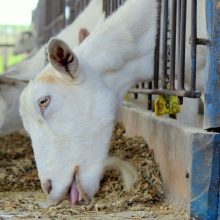Organ growth in goats
The article Visceral organ growth patterns in Saanen goats is available free for a month in the Journal of Agricultural Science
Goat body composition and nutritional requirements are affected by many factors, such as animal developmental stage and hormonal differences between sexes, among others. Although a large part of the energy spent by the animal is used for growth and maintenance of the organs, the dynamic changes of the visceral organs and tissues are not completely understood during goat growth.

We have conducted several experiments to better understand the nutritional requirements of goats and a comprehensive database was collected comprising information of visceral organs in growing goats of different sexes. We assessed the growth pattern for each visceral organ using growth models from the literature and compared the ability of these models to explain the growth pattern of each visceral organ, applying a meta-analytic approach to determine the best models. Allometric models were also used to elucidate how these organs grow in relation to the body.
The logistic model best described visceral organ growth over time. After the inflection point, organ growth rates tended to decrease and finally stabilize and were not affected by sex, except for the mesenteric adipose tissue. The total weight of visceral organs decreased proportionally to body weight with age, which suggests that the energy expenditure of these organs, in proportion to total energy expenditure, also decreases with the aging of the animals, in other words, visceral organs demand more energy in the first three months of the animal’s life, when the highest growth rates were observed.
The article Visceral organ growth patterns in Saanen goats is available free for a month.
Photo credit: courtesy of Goat Facility of UNESP, Jaboticabal Campus, Brazil.






